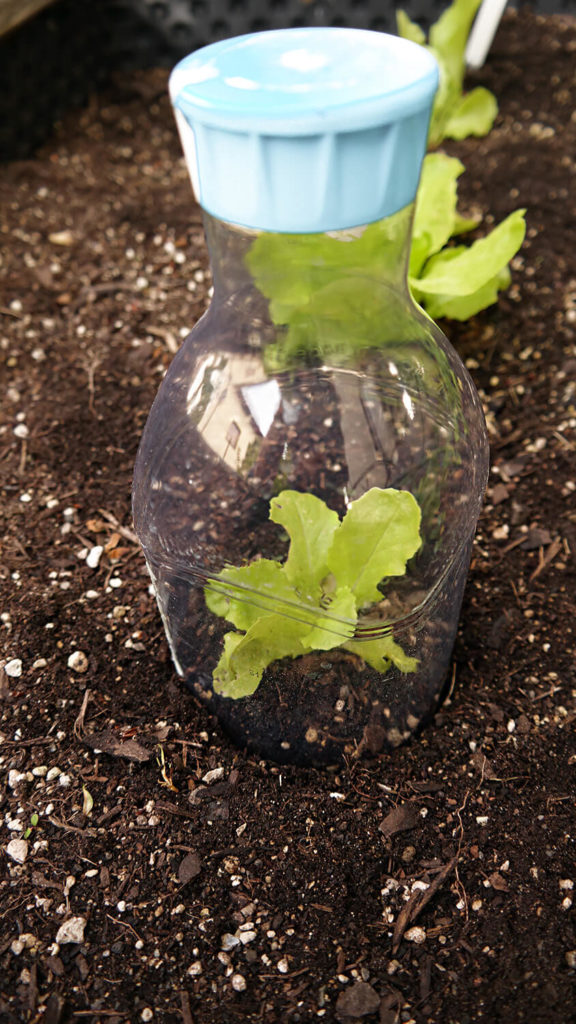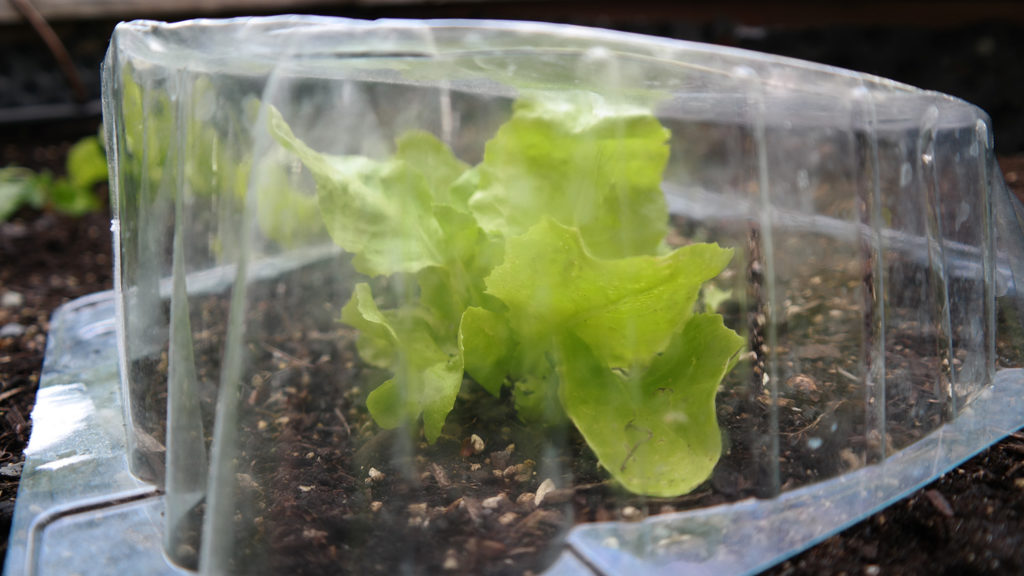Protection from frost and cold
A warm coat for your winter vegetables
The temperatures are dropping and you’re freezing every time you step outside the front door? Then it’s time to provide not only you, but also your winter vegetables with warm winter clothing.
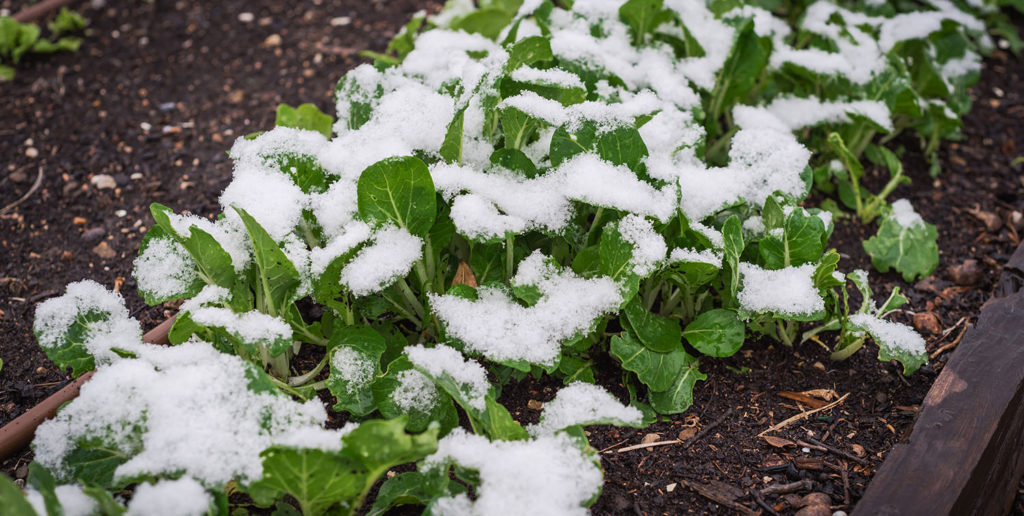
Many winter vegetable species cope quite well with frost and low temperatures. Frost-resistant species, such as spinach, lamb’s lettuce or various Asian vegetables, can even withstand -10°C to – 20°C. Other vegetables, e.g. kohlrabi, white cabbage or fennel are more sensitive to cold, even a few minus degrees will damage them.
You should protect them all from the cold! More sensitive vegetables can be harvested into the winter with protection from the cold, and even frost-resistant vegetables thrive better in a cozy environment. The plants are protected from strong day/night temperature fluctuations and on sunny days they even form new leaves. And then there are very practical reasons: protected plants are easier to harvest and you don’t have to dig under the snow cover for a long time to find your vegetables.
For the protection of your plants you have many different options. From simple and homemade, upcycled or purchased. We present some ideas here:
Warm winter blanket from mulch
Uncovered soil quickly freezes at sub-zero temperatures by a few centimeters in depth. The frozen water expands, injuring the plant roots. Root vegetables such as carrots or parsnips cannot be harvested when the soil is frozen; you have to wait for the next frost-free period. You can remedy this with a warm, thick layer of mulch, either straw, grass clippings, leaves, wood wool or miscanthus, which you apply around each vegetable plant. The mulch layer should be at least 5-10 inches thick, the thicker the better. Be careful not to cover your vegetables, though, because they need light to survive.
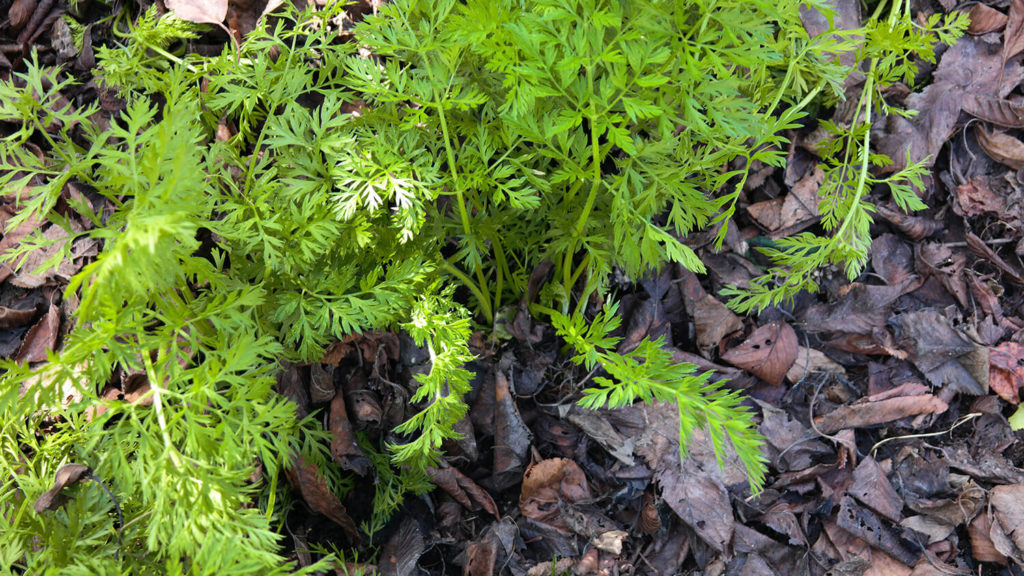
Upcycling – too good for the dustbin
Fruit cups, empty beverage bottles and other packaging go straight into the yellow bag? That’s a shame. Empty, transparent packaging waste can be used to create the perfect cold protection for your vegetables. Put the clean cups or mugs over your vegetables one by one and fasten them to the edge with longer nails or safety pins so that the first gust of wind doesn’t carry them away. And your mini greenhouse is ready to go. Air it out on warmer days so it doesn’t mold or burn under the cups.
Plastic beverage bottles are particularly convenient. Cut off the bottom and stick them over the vegetables directly into the soil. To ventilate, simply unscrew the cap – ingenious, isn’t it?
Fleeces – almost like a pro
They are commonplace in commercial horticulture, where they are used mainly for the early planting of vegetable crops and to protect them from late frosts. In the meantime, there is also a larger selection of fleeces for the hobby sector.
Fleeces are permeable to air, light and water. Their great advantage is that you do not have to worry about ventilation and when watering – attention: only in very dry winters on frost-free days – the fleece simply remains on the plants.
Stretch the garden fleece over bent poles, e.g. made of metal, plastic or self-made from bendable branches. This creates a small air space that acts as an additional heat reservoir. In addition, the fleece can not freeze to the plants during frost.
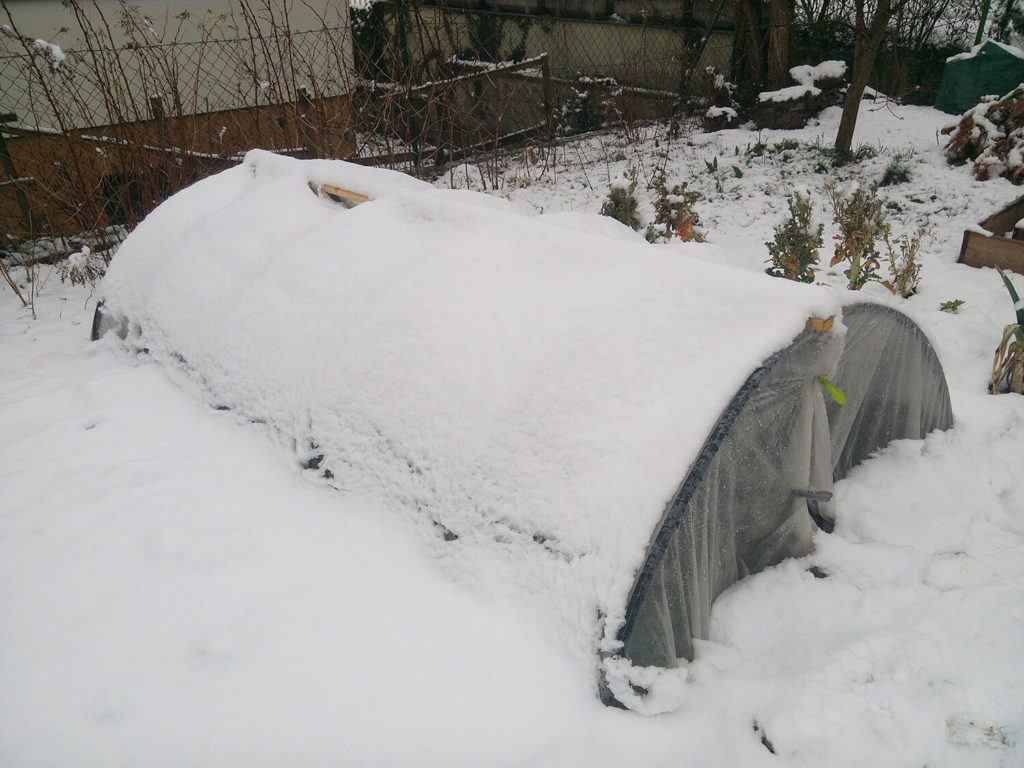
Fleeces are available in different thicknesses, e.g. 20 g/m², 30 g/m² or 50 g/m². The higher the weight, the better the protection against the cold. However, with the weight the light transmission is reduced – and especially winter vegetables need every ray of sunlight. Choose a lighter fleece in a foggy and dull region and a heavier one in a sunny area. Fleeces protect your plants from frost up to – 5°C.
Cold frames
Long before there were heated glass houses and foil tunnels, commercial and amateur gardeners used cold frames to bring forward the harvest of lettuce and co. Due to changing climate conditions, the early bed has become a “year-round” bed in recent years. Winter vegetables feel particularly at home in them, as they are also protected from heavy frosts.
You can build a cold frame yourself or buy one. The offer in the trade is large, there are cold frames in the most different price ranges and forms. Plastic cold frames are usually inexpensive, lightweight and flexible. However, stability and thermal insulation vary depending on the model.
More stable are cold frames made of wood or bricks. Both forms you can also build yourself.
Choose a sunny and windless location for the cold frame. Align it in a north-south direction, so you get the best sun yield. With a width of 80-100 cm, your cold frame is easy to work with. The length is arbitrary. Longer cold frames can be divided into sections and used for various purposes besides winter vegetables, e.g. as a manure bed or cold frame, for young plants or for hardening off.
Homemade – very simple with bricks
You need:
- (old) bricks – preferably clinker bricks, as they are very frost resistant.
- transparent cover: e.g. old window, glass pane, web or corrugated sheet
- possibly wind hook and eye
- tape measure, pegs
Measure the space for the cold frame and stake it out with pegs. Now layer the bricks, each staggered in 3-4 rows on top of each other. If necessary, you can also fix the bricks with a little mortar.
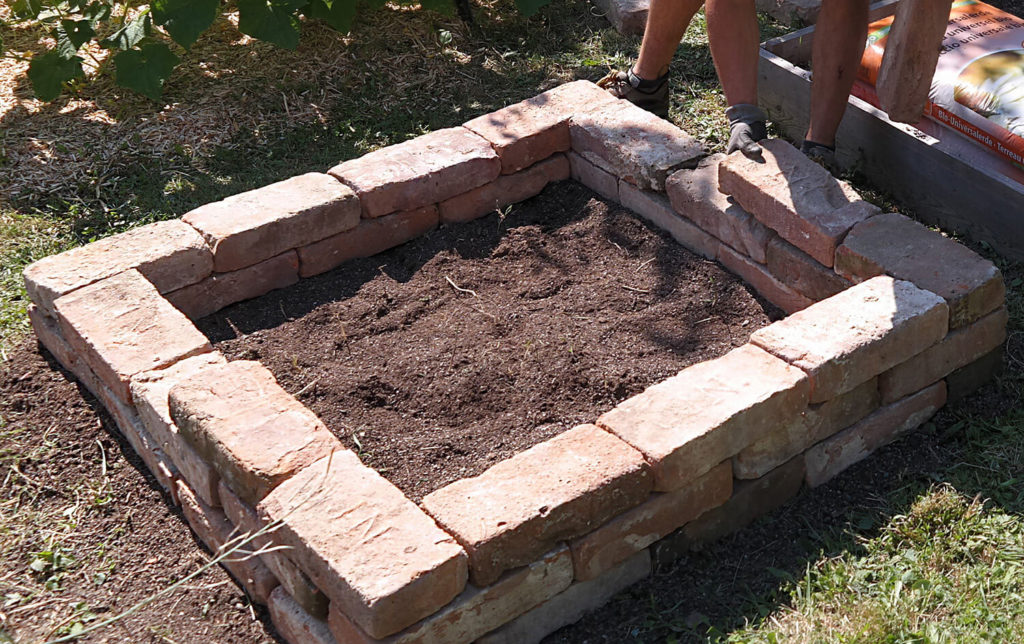
Put the transparent cover on the last row of bricks. Practical is an old window, which is still attached to a window frame. This makes the cold frame higher and the plants have enough space to grow. You can often get old windows very cheaply at house remodels. They are also offered in online platforms. With a flat cover (e.g. an old glass plate) you need more rows of bricks and the cold frame will not be completely filled.
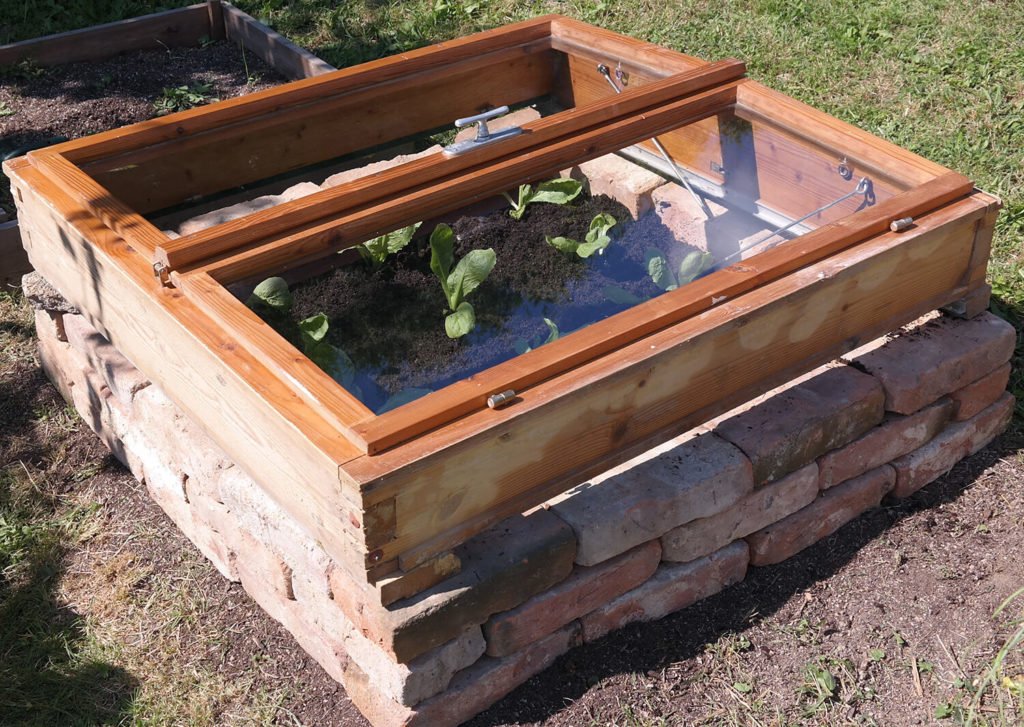
Fix one wind hook with eyelets on each side of the window to the window frame and frame. This allows the window sash to be opened for ventilation or on warm sunny days.
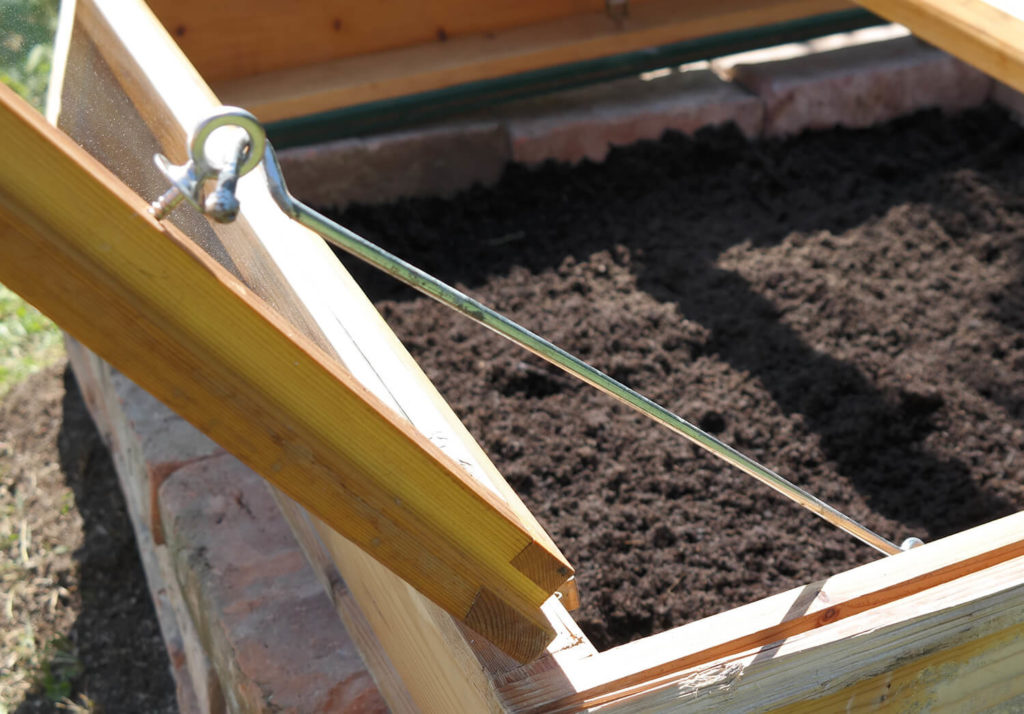
Brick cold frames are stable and have very good thermal insulation. In addition, they are an ornament for any garden.
Wooden cold frame
A wooden cold frame can also be used as a moving box, i.e. you can simply move the cold frame to those beds where vegetables in need of warmth are growing. With dimensions of 80-100 cm per side, the moving box is easy to transport. Such cold frames are ideal if you want to be flexible and spontaneously need protection from the cold for your winter vegetables.
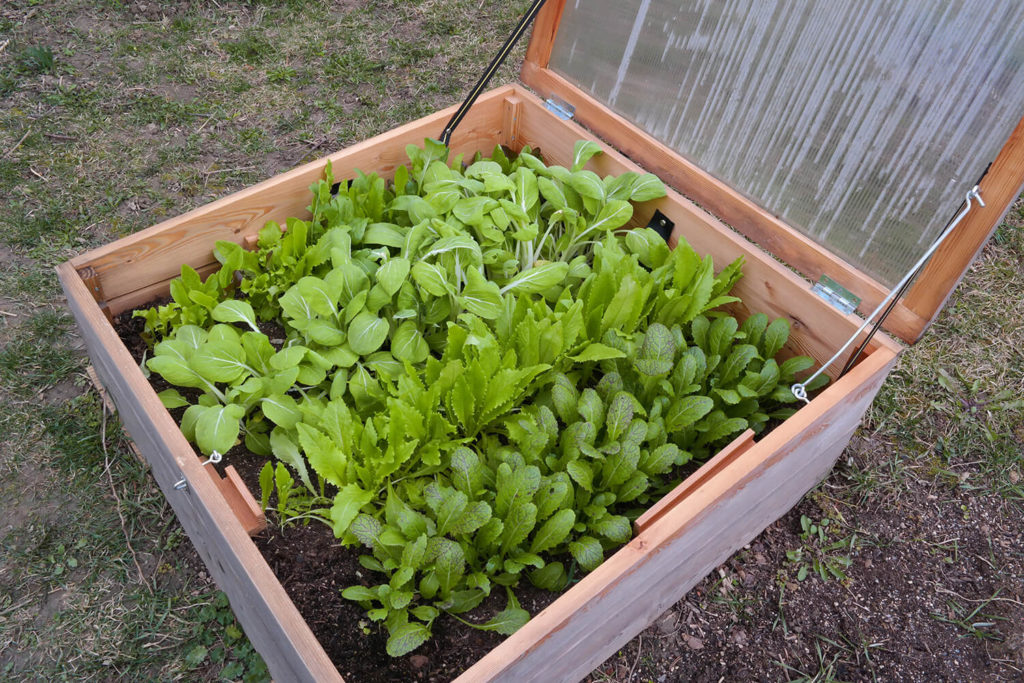
For self-builders:
Make a wooden frame that is approx. 40 cm high at the back wall and approx. 30 cm high at the front. Screw the basic frame to a cover, e.g. a web plate. Hinges or other fittings are practical for uncomplicated opening and closing of the cover. Due to the slanted cover, the sun’s rays optimally warm the inside of the cold frame.
Cold frame attachment for the raised bed
Are you a happy owner of a raised bed? A cold frame keeps the cold out. And the winter vegetables even have a bonus in the raised bed. Because it is warmed from below by the filling of the raised bed and from the side by the raised bed walls.
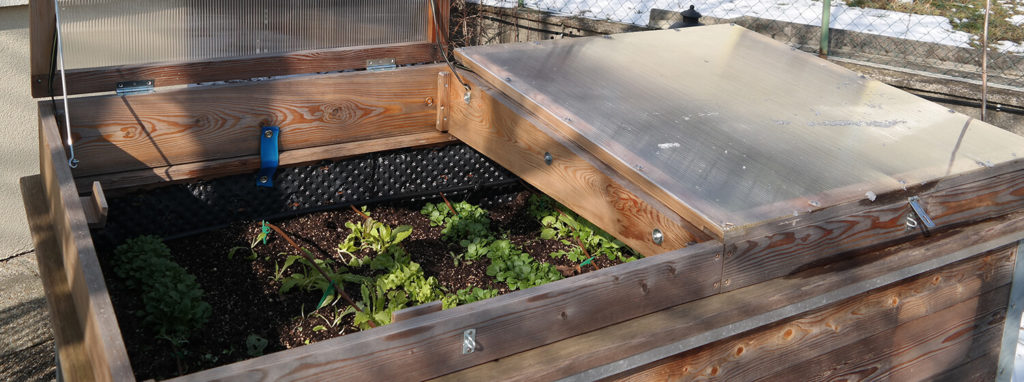
Super luxury: the glass house
A greenhouse is a great thing. But even though prices have come down in recent years, you still have to reckon with corresponding initial costs. For winter vegetables, a simple, unheated glass house will do. It is not only more ecological, too much heat would even “overtax” many winter vegetables. The plants then believe that spring is already here and begin to bloom prematurely.
Use the onion method to protect your winter vegetables even in particularly frosty winters: for example, pack the vegetables in the cold frame well with a mulch blanket. Or cover them additionally with cups or fleece under a cold frame in the raised bed. Even in the greenhouse, the plants are happy with an additional layer of mulch and cover with fleece.
-
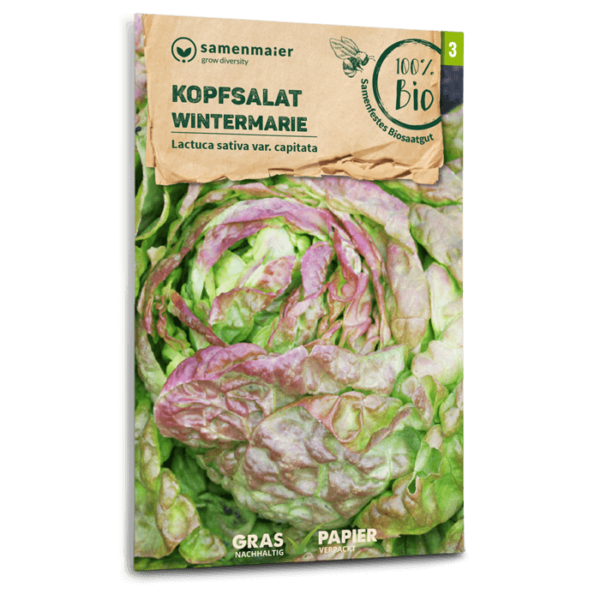 Organic Lettuce Wintermarie€ 3.99
Organic Lettuce Wintermarie€ 3.99incl. 13% VAT
Keine Versandkosten ab € 20 Warenkorb
-
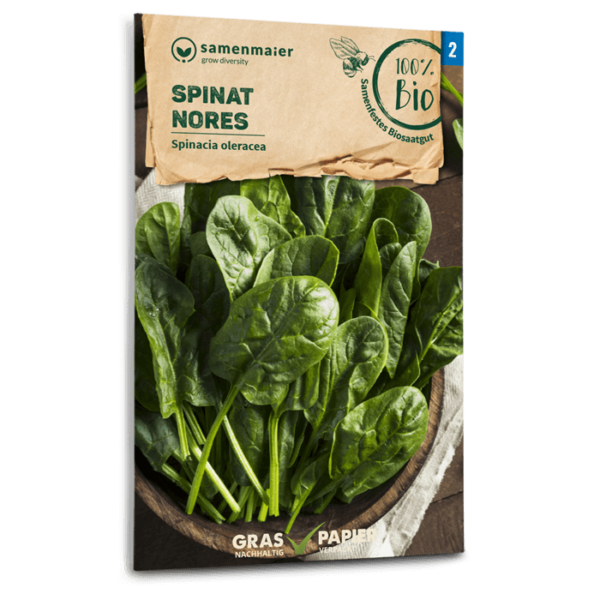 Organic Spinach Nores€ 2.99
Organic Spinach Nores€ 2.99incl. 13% VAT
Keine Versandkosten ab € 20 Warenkorb
-
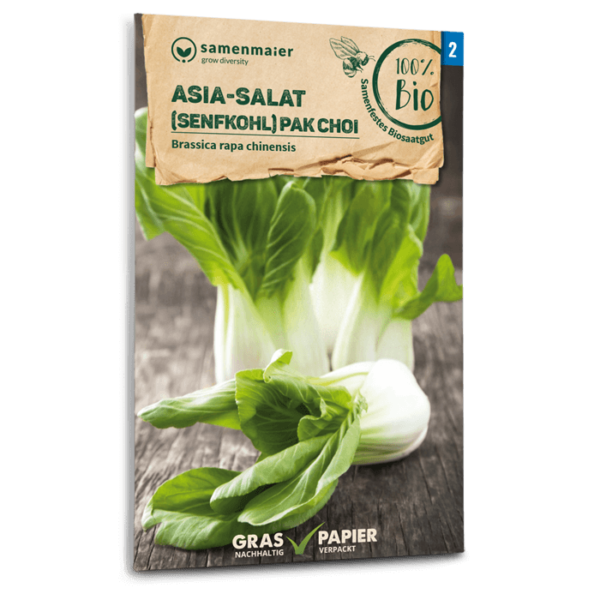 Organic Asian cabbage (Pak choi)€ 2.99
Organic Asian cabbage (Pak choi)€ 2.99incl. 13% VAT
Keine Versandkosten ab € 20 Warenkorb

